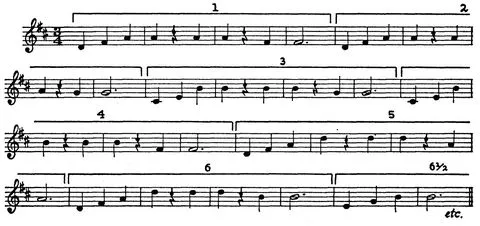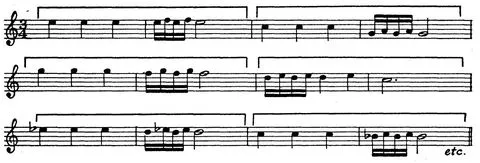
eBook - ePub
Style and Idea
Arnold Schoenberg
This is a test
Share book
- 236 pages
- English
- ePUB (mobile friendly)
- Available on iOS & Android
eBook - ePub
Style and Idea
Arnold Schoenberg
Book details
Book preview
Table of contents
Citations
About This Book
In these enlightening essays, the Austrian composer and music theorist presents his vision of how music speaks to us and what it is capable of saying. This book is full of essays which Arnold Schoenberg wrote on style and idea. He talks about the relationship to the text, new and outmoded music, composition in twelve tones, entertaining through composing, the relationship of heart and mind in music, evaluation of music, and other essays.
Frequently asked questions
How do I cancel my subscription?
Can/how do I download books?
At the moment all of our mobile-responsive ePub books are available to download via the app. Most of our PDFs are also available to download and we're working on making the final remaining ones downloadable now. Learn more here.
What is the difference between the pricing plans?
Both plans give you full access to the library and all of Perlego’s features. The only differences are the price and subscription period: With the annual plan you’ll save around 30% compared to 12 months on the monthly plan.
What is Perlego?
We are an online textbook subscription service, where you can get access to an entire online library for less than the price of a single book per month. With over 1 million books across 1000+ topics, we’ve got you covered! Learn more here.
Do you support text-to-speech?
Look out for the read-aloud symbol on your next book to see if you can listen to it. The read-aloud tool reads text aloud for you, highlighting the text as it is being read. You can pause it, speed it up and slow it down. Learn more here.
Is Style and Idea an online PDF/ePUB?
Yes, you can access Style and Idea by Arnold Schoenberg in PDF and/or ePUB format, as well as other popular books in Mezzi di comunicazione e arti performative & Musica classica. We have over one million books available in our catalogue for you to explore.
Information
Brahms the Progressive 2
I
It has been said that Brahms’ social manners were often characterized by a certain dryness. This was not the “Unknown” Brahms.3 Vienna knew his method of surrounding himself with a protective wall of stiffness as a defense against certain types of people, against the obtrusiveness of oily bombast, moist flattery, or honeyed impertinence. It is not unknown that those annoying bores, those sensationalists who were out for a good anecdote and those tactless intruders into private lives got little better than dryness. When the sluices of their eloquence were open and the flood threatened to engulf him, dryness was no protection. This is why he was often forced to resort to rudeness. Even so, his victims may have tacitly agreed to nickname what had befallen them “Brahmsian dryness”; and it may be assumed that each one rejoiced at the other’s misfortune, but thought that he himself had been done wrong.
Dryness or rudeness, one thing is certain: Brahms did not want to express high esteem in this manner.
Contemporaries found various ways to annoy him. A musician or a music lover might intend to display his own great understanding, good judgment of music, and acquaintance with “some” of Brahms’ music. Hence he dared say he had observed that Brahms’ First Piano Sonata was very similar to Beethoven’s Hammerklavier Sonata. No wonder that Brahms, in his straightforward manner, spoke out: “Das bemerkt ja schon jeder Esel.” (“Every jackass notices that!”)
A visitor meant to be complimentary when he said: “You are one of the greatest living composers.” How Brahms hated this “one of.” Who does not see that it means, “There are a few greater than you, and several of equivalent rank?”
But doubtless the most annoying were those visitors (like one composer from Berlin) who told him: “I am an admirer of Wagner, the progressive, the innovator, and of Brahms, the academician, the classicist.” I do not remember what kind of dryness or rudeness he applied in this case, but I know there was a great story in Vienna about the manner in which Brahms presented his esteem for this flattery.
But, after all, it was the attitude of the time; those who disliked Wagner clung to Brahms, and vice versa. There were many who disliked both. They were, perhaps, the only non-partisans. Only a small number were able to disregard the polarity of these two contrasting figures while enjoying the beauties of both of them.
What in 1883 semed an impassable gulf was in 1897 no longer a problem. The greatest musicians of that time, Mahler, Strauss, Reger, and many others had grown up under the influence of both these masters. They all reflected the spiritual, emotional, stylistic and technical achievements of the preceding period. What then had been an object of dispute had been reduced into the difference between two personalities, between two styles of expression, not contradictory enough to prevent the inclusion of qualities of both in one work.
Form in Music serves to bring about comprehensibility through memorability. Evenness, regularity, symmetry, subdivision, repetition, unity, relationship in rhythm and harmony and even logic—none of these elements produces or even contributes to beauty. But all of them contribute to an organization which makes the presentation of the musical idea intelligible. The language in which musical ideas are expressed in tones parallels the language which expresses feelings or thoughts in words, in that its vocabulary must be proportionate to the intellect which it addresses, and in that the aforementioned elements of its organization function like the rhyme, the rhythm, the meter, and the subdivision into strophes, sentences, paragraphs, chapters, etc. in poetry or prose.
The more or less complete exploitation of the potency of these components determines the aesthetic value and the classification of the style in respect to its popularity or profundity. Science must explore and examine all facts; art is only concerned with the presentation of characteristic facts. Even Antony, when addressing the Roman people, realizes that he must repeat his”… and Brutus is an honorable man” over and over, if this contrast is to penetrate into the minds of simple citizens. Repetitions in Mother Goose songs are of course on a different level, and so is the organization of popular music. Here one finds numerous slightly varied repetitions, as in the otherwise very beautiful Blue Danube Waltz.

EXAMPLE 1
Here are six repetitions, and almost all are based on the alternation of tonic and dominant.
Though richer in harmony, the example from Verdi’s Il Trovatore is of no higher order:

EXAMPLE 2
An artist or an author need not be aware that he accommodates his style to the listener’s capacity of comprehension. An artist need not think very much, if only he thinks correctly and straightforwardly. He feels that he obeys the urge of a spring within himself, the urge to express himself, just like a clock, which indicates twenty-four hours every day, without questioning whether it means “this” day, this month, this year, or this century. Everyone knows this, except the clock. The artist’s response to the urge of his motor occurs automatically without delay, like that of every well-lubricated mechanism.
It is obvious that one would not discuss the splitting of atoms with a person who does not know what an atom is. On the other hand, one cannot talk to a trained mind in Mother Goose fashion or in the style of what Hollywoodians call “lyrics.” In the sphere of art-music, the author respects his audience. He is afraid to offend it by repeating over and over what can be understood at one single hearing, even if it is new, and let alone if it is stale old trash. A diagram may tell the whole story of a game to a chess expert; a chemist recognizes all he wants to know by glancing at a few symbols; but in a mathematical formula are combined the distant past, the actual present, and the most remote future.
Repeatedly hearing things which one likes is pleasant and need not be ridiculed. There is a subconscious desire to understand better and realize more details of the beauty. But an alert and well-trained mind will demand to be told the more remote matters, the more remote consequences of the simple matters that he has already comprehended. An alert and well-trained mind refuses to listen to baby-talk and requests strongly to be spoken to in a brief and straightforward language.
III
Progress in music consists in the development of methods of presentation which correspond to the conditions just discussed. It is the purpose of this essay to prove that Brahms, the classicist, the academician, was a great innovator in the realm of musical language, that, in fact, he was a great progressive.
This may seem contestable to an incarnate “old-Wagnerian,” no matter whether he is one of the primigenial Wagnerians who has grown old, or simply an “old-Wagnerian” by birth. There were still fireproof “old-Wagnerians” born at the time of my own generation and even ten years later. Pioneers of musical progress on the one hand, and keepers of the Holy Grail of true art on the other, they considered themselves entitled to look with contempt at Brahms the classicist, the academician.
Gustav Mahler and Richard Strauss had been the first to clarify these concepts. They had both been educated in the traditional as well as in the progressive, in the Brahmsian as well as in the Wagnerian philosophy of art (Weltanschauung ). Their example helped us to realize that there was as much organizational order, if not pedantry in Wagner as there was daring courage, if not even bizarre fantasy in Brahms. Does not the mystic correspondence of the numbers of their dates suggest some mysterious relationship between them? Brahms’ one-hundredth birthday anniversary in 1933 was the fiftieth anniversary of the death of Wagner. And now, as this essay is being rewritten, we commemorate the fiftieth anniversary of Brahms’ death.
Mysteries conceal a truth, but direct curiosity to unveil it.
IV
How great an innovator Brahms was in respect to harmony can be seen in this example from his string quartet in C minor, Op. 51, No. 1. (ms. 11-23).

EXAMPLE 3
This is the contrasting middle section of a ternary form whose a-section is already rich enough harmonically in comparison with the I-V or I-IV-V harmony, intermixed occasionally with a VI or III and sometimes a neapolitan triad, of Br...